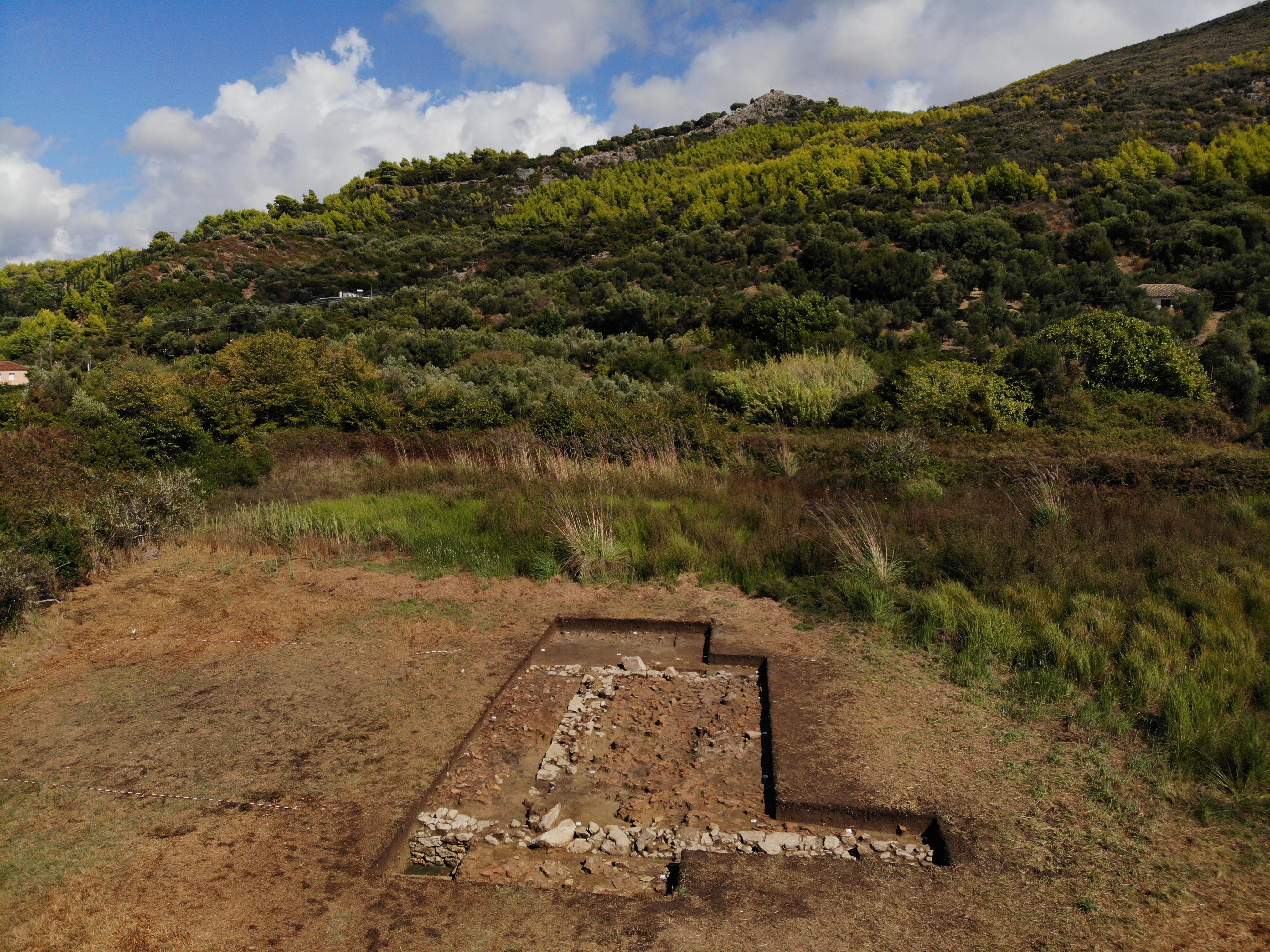The great Greek god of the seas, Poseidon, will be no doubt pleased to hear that archeologists have discovered a temple that once stood in his honor. Remarkably, the remains might even be those of an important shrine that was mentioned by the ancient Greek historian Strabo.
Archeologists led by the Austrian Archaeological Institute say the ruins were found at a site that was once a Poseidon sanctuary surrounded by a grove of wild olives and, as such, they believe the remains of the structure were a temple dedicated to the god.
“The location of this uncovered sacred site matches the details provided by Strabo in his writings,” Dr Birgitta Eder, Director of the Athens Branch of the Austrian Archaeological Institute, said in a statement.
The outline of the modest temple lays in the ground. Image credit: ©Dr. Birgitta Eder / Athens Branch of the Austrian Archaeological Institute
The site can be found among three hills near the tiny Greek village of Samikon and the beach that overlooks the Ionian Sea. Today, this is a sleepy pocket of the Mediterranean coast – but it was once an important hub of activity and travel used by the ancient Greeks since the Mycenaean-era
“The elevated situation provided by the hills would have been of fundamental importance in antiquity as it would have made it possible to move on dry land along the coast to the north and to the south,” explained Professor Andreas Vött, a geoarchaeologist from Johannes Gutenberg University Mainz in Germany.
When this 9-meter (29-foot) wide temple was in its heyday, the waves of the Ionian Sea lapped against the three hills, as if it had a front-row seat to the majesty of Poseidon’s kingdom.
“The results of our investigations to date indicate that the waves of the open Ionian Sea actually washed up directly against the group of hills until the 5th millennium BCE. Thereafter, on the side facing the sea, an extensive beach barrier system developed in which several lagoons were isolated from the sea,” added Vött.
A bird’s eye view of the temple’s ruins. Image credit: © Dr. Birgitta Eder / Athens Branch of the Austrian Archaeological Institute
Poseidon was the Olympian god of the sea, earthquakes, floods, drought, and horses. Among the many ancient Greek myths he features in, Poseidon is often portrayed as one of the most violent and bad-tempered. If something wound him up the wrong way, it was said he would strike the ground with his trident, causing earthquakes, violent storms, and tsunamis.
The researchers say this site near Samikon was likely chosen for the temple because the area was so prone to tsunamis. Perhaps it was built in an attempt to appease his angry soul…
Unfortunately, it looks like the temple may have fallen victim to his notorious wrath. Geological evidence suggests the area was hit by a number of tsunamis at some point during the most recently in the 6th and 14th centuries CE, while written accounts show how catastrophic waves hit the region in both 551 and 1303 CE.
It’s not clear when exactly the structure fell into ruin, but its risky location means it was always living life on the edge.
The new study was published in the Greek journal Kalamata [PDF].
Source Link: Ancient Temple To Poseidon Found Among The Tsunami-Hit Hills Of Greece
